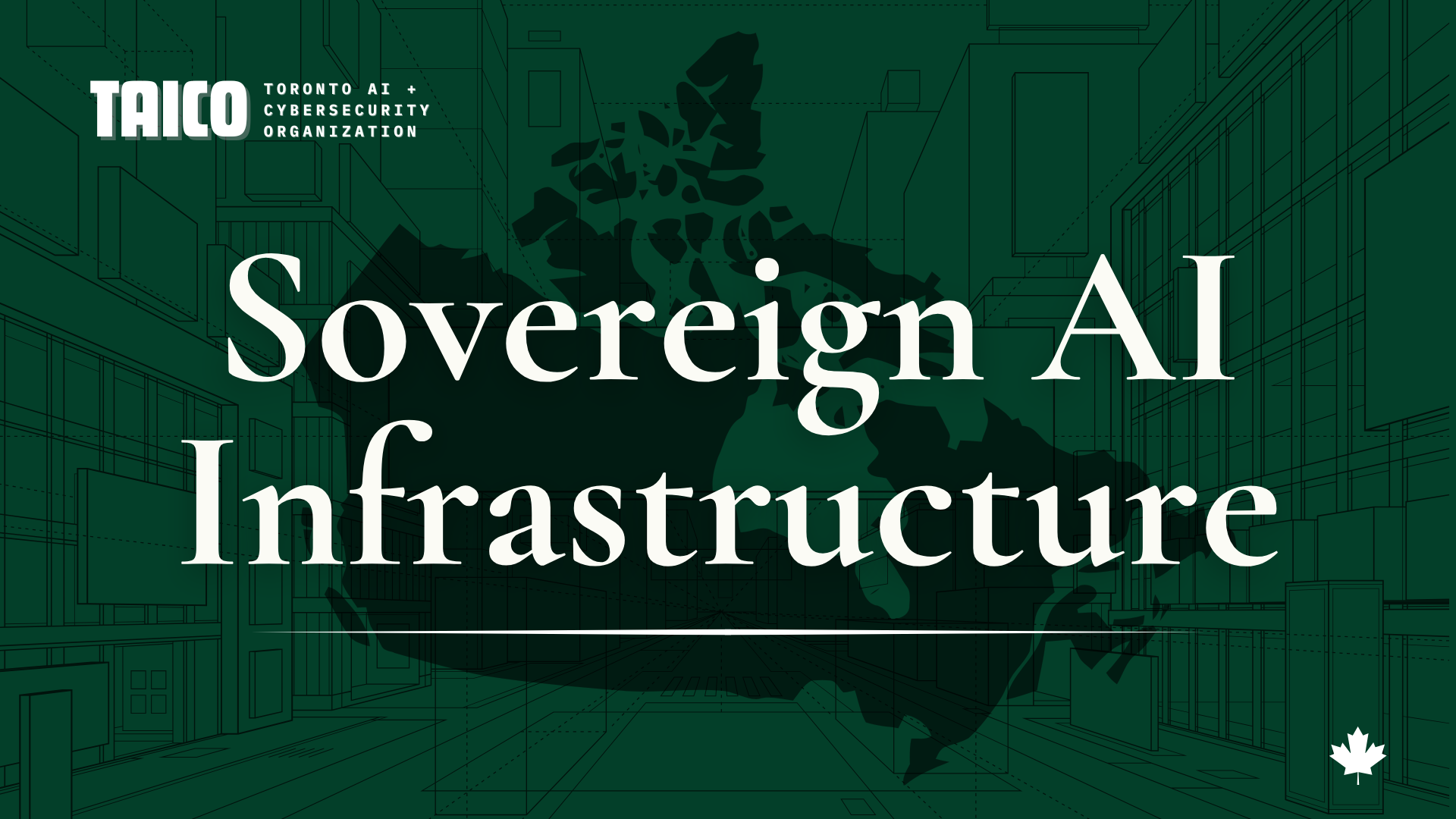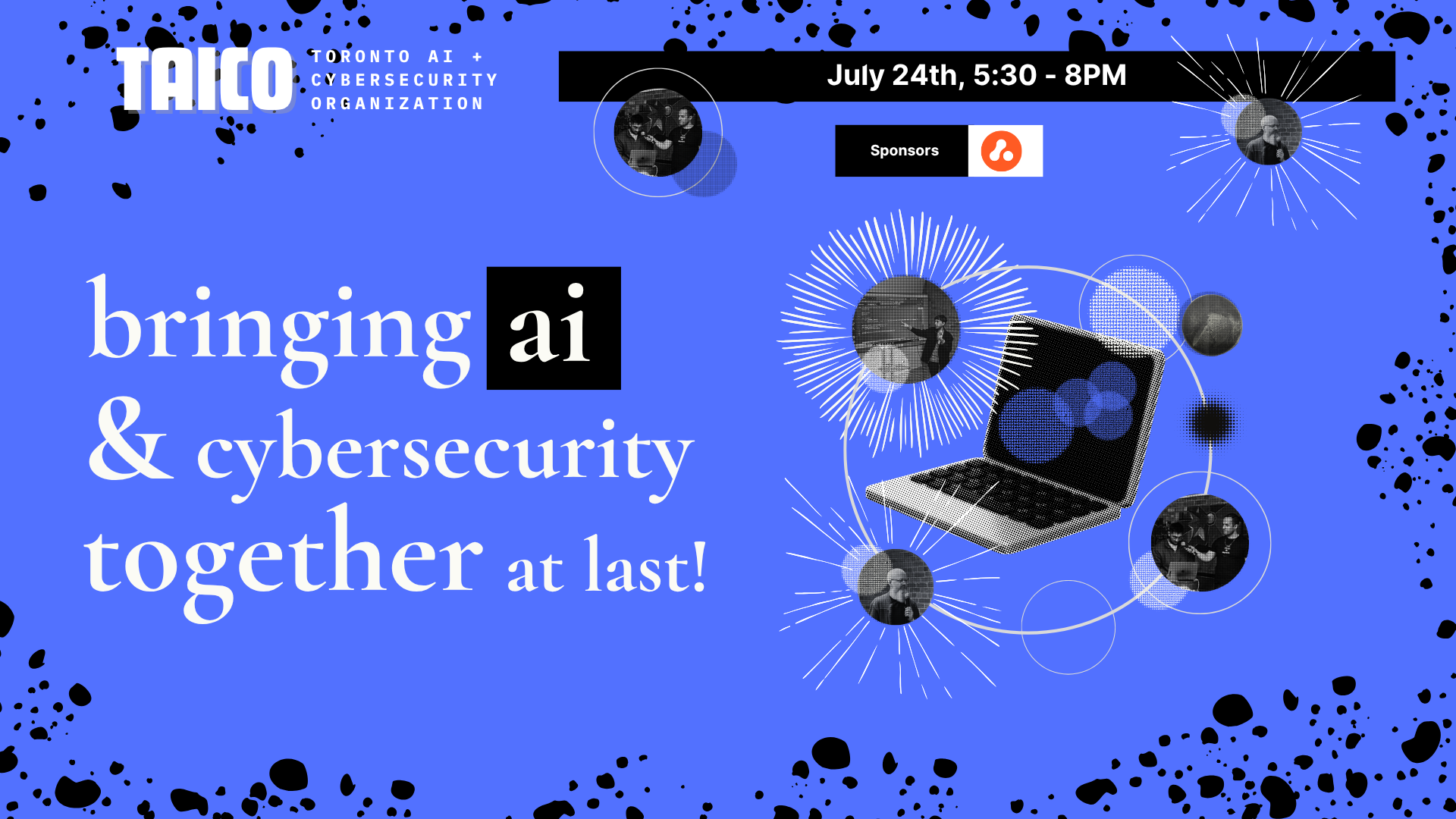Canada's Need for Sovereign AI Infrastructure

This post is intended to initiate a discussion on the topic of sovereign AI infrastructure and TAICO's potential role. As we learn more and TAICO evolves its own framework for understanding and addressing these issues, the ideas put forth here will change. This is a work in progress.
Global Context
Whether we see it in our daily lives or not, as Canadians, we are competing with other countries in technology and other areas. At this pivotal point in artificial intelligence development, countries are substantially investing in AI infrastructure and security capabilities. The competition is not only about who has data centers and GPUs, but also about who has the best models, policies, economic frameworks, talent, and talent acquisition and practical know-how.
Today, nations understand that developing, deploying, and governing AI systems independently is essential for maintaining economic independence, protecting national interests, and ensuring that domestic values and priorities are reflected in AI development and deployment. Regardless of where one falls on the spectrum of AI capabilities, they will be used in some way, shape, or form, and these uses will affect us as a nation.
Cultural Infrastructure
Traditional data centers have largely been apolitical. Historically, running enterprise workloads in “the cloud,” or in a data center such as one in Northern Virginia, has not been a significant political concern. While there have certainly been questions around data residence, this has not necessarily stopped the flow of bits around the world.
However, AI models are different. They can represent the “culture” of the data they were trained on, albeit in a strange way that looks like highly lossy compression. Whether we like it or not, AI tools will be used. A simple example would be using an AI tool as a replacement for a search engine when shopping for a product or responding to a student’s question with a chatbot. What will these LLMs say? What will software agents based on them do? The information they produce and the actions they take may be biased by how they were trained. Certain subjects may be more or less likely to be discussed, suppressed, censored, or altered.
Furthermore, a model trained by an adversarial nation could contain backdoors that only activate in specific operational contexts long after initial security assessments were performed in relatively sterile, benign test environments. It is difficult to predict how a model will behave once deployed in a production environment. We simply don’t yet know what is plausible, impossible, or unlikely.
Canada’s Strategic Position
In the “AI factory” era, all countries will need AI infrastructure to compete. However, purposeful and strategic decisions will be necessary to develop this capability. This will require physical computing and energy resources, as well as cultural, ideological, and human resources.
Canada possesses many strategic advantages.
- Robust rule of law and economic frameworks
- Extensive global partnerships
- A thriving AI research ecosystem
- Abundant renewable energy resources
And much more.
Spotlight on European and Saudi Arabia’s Initiatives
Humain, a new AI company under the Public Investment Fund (PIF) — a sovereign wealth fund of Saudi Arabia — will develop advanced AI technologies, next-generation data centers, cloud infrastructure, and one of the world’s most powerful multimodal Arabic large language models (LLMs)- CIO
HUMAIN is making a major investment to build AI factories in Saudi Arabia with a projected capacity of up to 500 megawatts powered by several hundred thousand of NVIDIA’s most advanced GPUs over the next five years. The first phase of deployment will be an 18,000 NVIDIA GB300 Grace Blackwell AI supercomputer with NVIDIA InfiniBand networking. - ZAWYA
The emphasis on local LLMs and a sovereign AI infrastructure marks a bold shift in a sector dominated by Western and Chinese entities. “Beyond language, it’s about cultural context, regional control, and data sovereignty, setting a precedent for emerging markets to build locally grounded AI systems,” said Prabhat Mishra, Analyst at QKS Group. - CIO
The Kingdom of Saudi Arabia recently announced plans to build its own AI “hyperscaler” called Humain. Unlike a generic cloud provider, Humain is building an “AI factory” with millions of graphics processing units (GPUs). Note that it is not a data center; it is a factory. This shift in language suggests a new, somewhat provocative approach. Nations are no longer content to outsource their most strategic computational infrastructure, believing that it encompasses more than a static place to run computations. Instead, they are building a factory floor for producing goods.
European nations are also investing in AI infrastructure.
France, Italy, Spain and the U.K. are among the nations building domestic AI infrastructure with an ecosystem of technology and cloud providers, including Domyn, Mistral AI, Nebius and Nscale, and telecommunications providers, including Orange, Swisscom, Telefónica and Teleno - NVIDIA
In France, Mistral AI is working with NVIDIA to build an end-to-end cloud platform powered by 18,000 NVIDIA Grace Blackwell systems in the first phase, with plans to expand across multiple sites in 2026. This infrastructure will enable organizations across Europe to quickly develop and deploy AI using optimized Mistral AI models and validated AI factory designs, accelerating the adoption of agentic AI applications. - NVIDIA
Of course it should be noted that these initiatives often work in collaboration with private sector partners, sometimes located in other sovereign countries.
Canada’s Initiatives
For more on Canada’s initiatives, see:
Guided by the voices of Canadians, the Canadian Sovereign AI Compute Strategy will make strategic investments in public and commercial infrastructure to ensure that Canadian innovators, businesses and researchers have access to the compute capacity they need. - https://ised-isde.canada.ca/site/ised/en/canadian-sovereign-ai-compute-strategy
Today’s announcement is about investing in innovation and economic growth to secure Canada’s world-leading AI advantage today and for generations to come. This will create good-paying opportunities for every generation, boost innovation across the economy, raise productivity, and accelerate economic growth – and it’s just one of the things that we are going to be doing in Budget 2024. Alongside these measures, we’re building more homes faster, ensuring every kid has the food they need, investing in health care, making life more affordable, and creating good jobs to make sure every generation can get ahead. - https://www.pm.gc.ca/en/news/news-releases/2024/04/07/securing-canadas-ai
Through the Pan-Canadian Artificial Intelligence Strategy, the Government of Canada is investing in efforts to drive the adoption of artificial intelligence across Canada’s economy and society. The second phase of the strategy bridges Canada’s world-class talent and research capacity with programs to enable commercialization and adoption to help ensure that Canadian ideas and knowledge are mobilized and commercialized here at home. - https://ised-isde.canada.ca/site/ai-strategy/en
The Canadian AI Safety Institute (CAISI) is part of the Government of Canada’s plan to support the safe and responsible development and deployment of artificial intelligence (AI). Our goal is to advance the science of AI safety, in collaboration with international partners, in order to ensure that governments are well-positioned to understand and act on the risks of advanced AI systems. - https://ised-isde.canada.ca/site/ised/en/canadian-artificial-intelligence-safety-institute
How TAICO Can Help
TAICO’s community-first approach aligns perfectly with addressing these challenges.
We need:
-
Practical innovation: Hands-on projects that test AI security assumptions and develop real-world defense capabilities.
-
Open knowledge exchange: Transparent sharing of AI security research, especially regarding model evaluation and infrastructure hardening.
-
Community building: Connecting academic researchers, industry practitioners, and government stakeholders around shared AI security challenges.
-
Project-oriented learning: Developing open-source tools for AI security assessment and cultivating Canadian expertise in sovereign AI deployment.
TAICO’s Role in the Path Forward
The question isn’t whether AI will reshape global power dynamics: it already has. DeepSeek’s release, which occurred just 26 days after OpenAI’s latest model, shattered assumptions about technological timelines and national AI capabilities.
For Canada, the window for strategic positioning remains open.
The Canadian cybersecurity and artificial intelligence communities, such as TAICO, clearly have a role to play in this process. Our expertise can help determine whether Canada maintains digital sovereignty or becomes dependent on foreign AI infrastructure for critical national functions.
Taking Action
As Canada navigates the work of building its own sovereign AI infrastructure, our cybersecurity community must engage actively.
- Build capability in sovereign AI infrastructure.
- Develop threat models specific to AI infrastructure and deployment models.
- Foster relationships between AI researchers and cybersecurity practitioners.
- Advocate for policies that balance innovation with security requirements.
The future of Canadian digital sovereignty is not predetermined. It depends on our choices today regarding AI infrastructure, security frameworks, and international partnerships. The question is whether we will help build that future or simply respond to decisions made elsewhere.
What role should TAICO play in Canadian sovereign AI capabilities? Join the conversation at TAICO’s next meetup to explore practical approaches to AI security and digital sovereignty.


